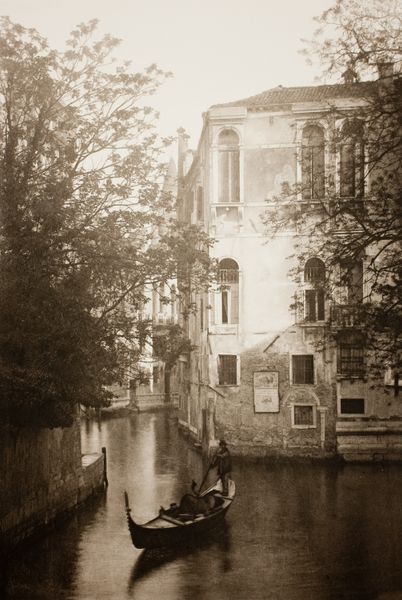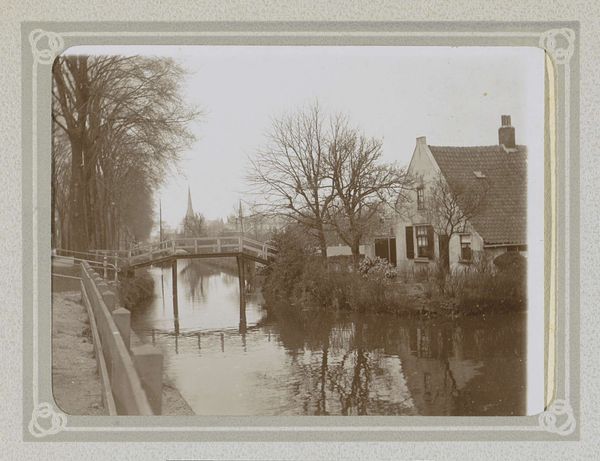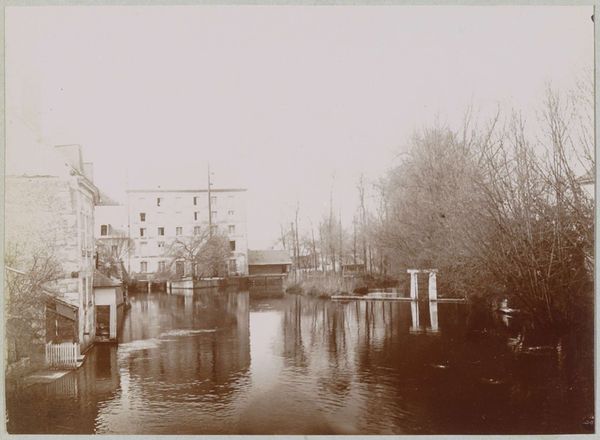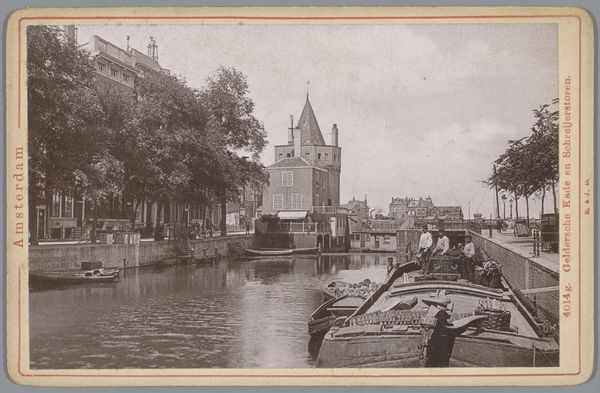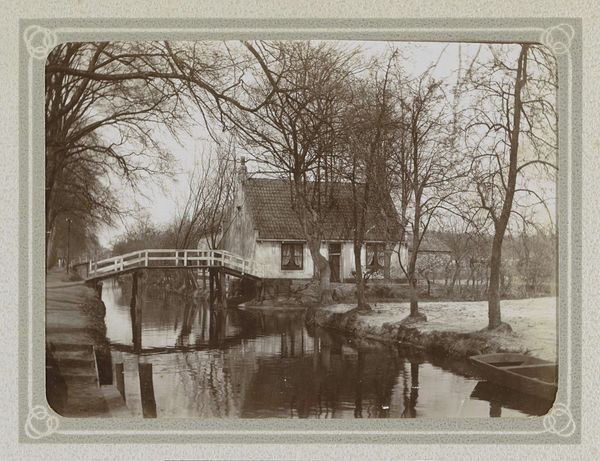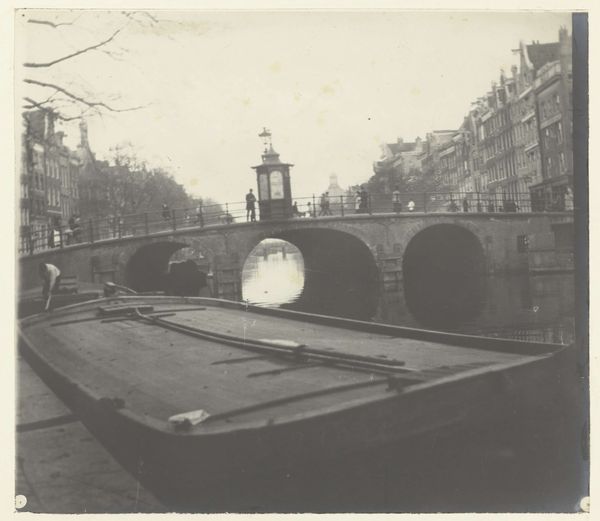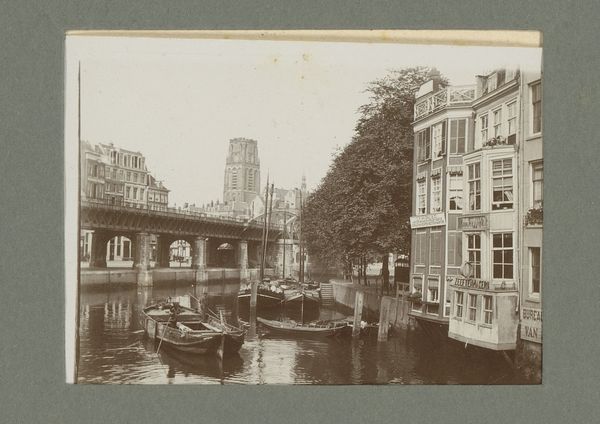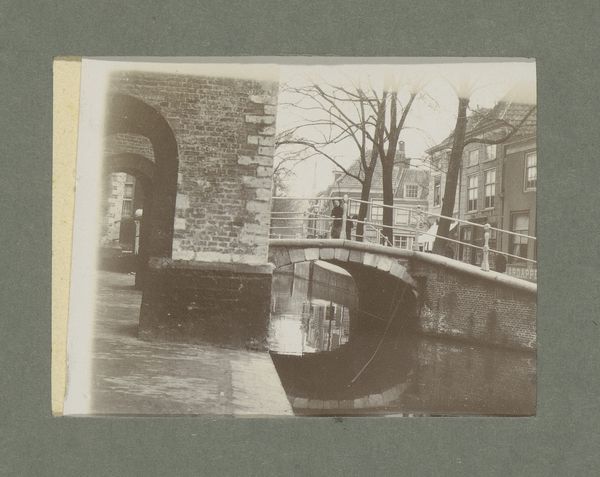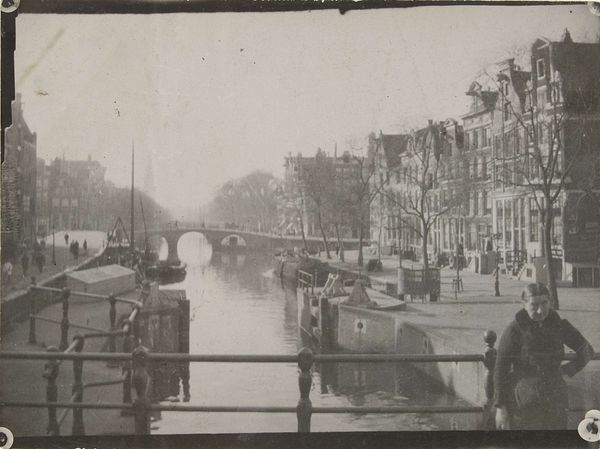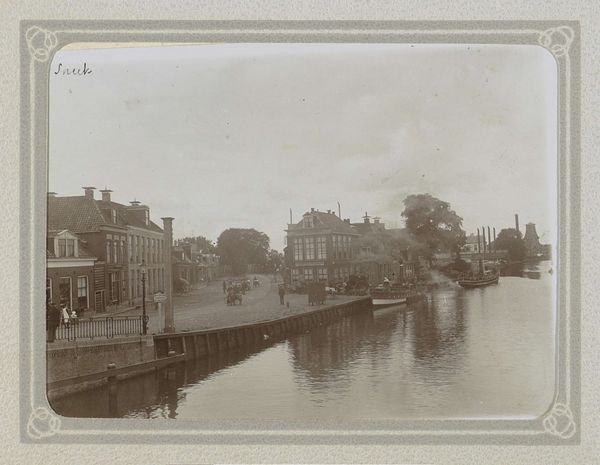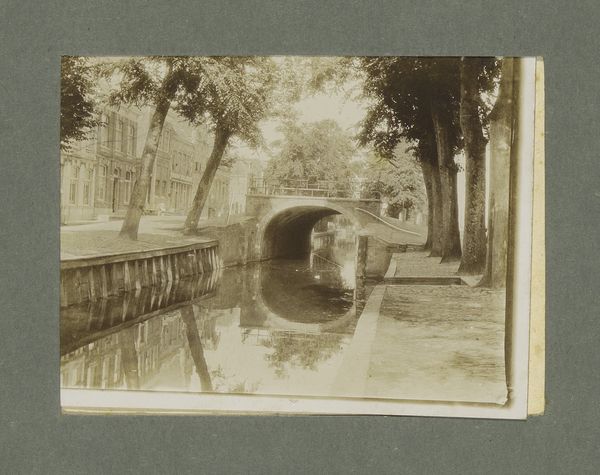
Gezicht op de Lombardbrug en het stadhuis in Dordrecht, met op de voorgrond een man in een roeiboot c. 1900 - 1910
0:00
0:00
Dimensions: height 73 mm, width 95 mm
Copyright: Rijks Museum: Open Domain
Editor: Here we have an early 20th-century photograph, sometime between 1900 and 1910, entitled "Gezicht op de Lombardbrug en het stadhuis in Dordrecht, met op de voorgrond een man in een roeiboot"—"View of the Lombard Bridge and the Town Hall in Dordrecht, with a man in a rowboat in the foreground." It’s a gelatin silver print, and I find it quite serene, almost melancholic. What stands out to you about this piece? Curator: I'm immediately drawn to the visual hierarchy and how it speaks to social stratification. The imposing architecture of the Town Hall looms in the background, a symbol of civic power. Then, we see the bridge, connecting different social spaces. And finally, there's the lone figure in the boat. Does his solitude suggest something about his relationship to the city? Is he an outsider, or merely a transient? Editor: That’s an interesting point! I hadn't considered the person in the boat as a symbol of social positioning. I was just appreciating the scene's stillness. Curator: It’s vital to consider photography from this period as a carefully constructed visual language. What does it mean to depict a man dwarfed by the architecture of governance? Does it comment on the individual's place within a rapidly industrializing society? Think about how gender and class might intersect here. Who had access to these spaces, both physically and symbolically? Editor: So you're saying the photographer isn’t just capturing a moment, but also making a statement about power and access within Dordrecht at the time? Curator: Precisely. It asks us to question whose perspectives were prioritized, and whose were marginalized. The “serenity” you mentioned might be masking underlying tensions of class and belonging. Consider researching Dordrecht at this time; it could enrich your reading considerably. Editor: That's given me a lot to think about. I definitely see the photo in a new light now. Thanks for pointing out the subtle, yet potent, undercurrents of social commentary. Curator: My pleasure. Engaging with art critically is about peeling back the layers to uncover these hidden dialogues and reflect on their implications for our own understanding of the world.
Comments
No comments
Be the first to comment and join the conversation on the ultimate creative platform.
